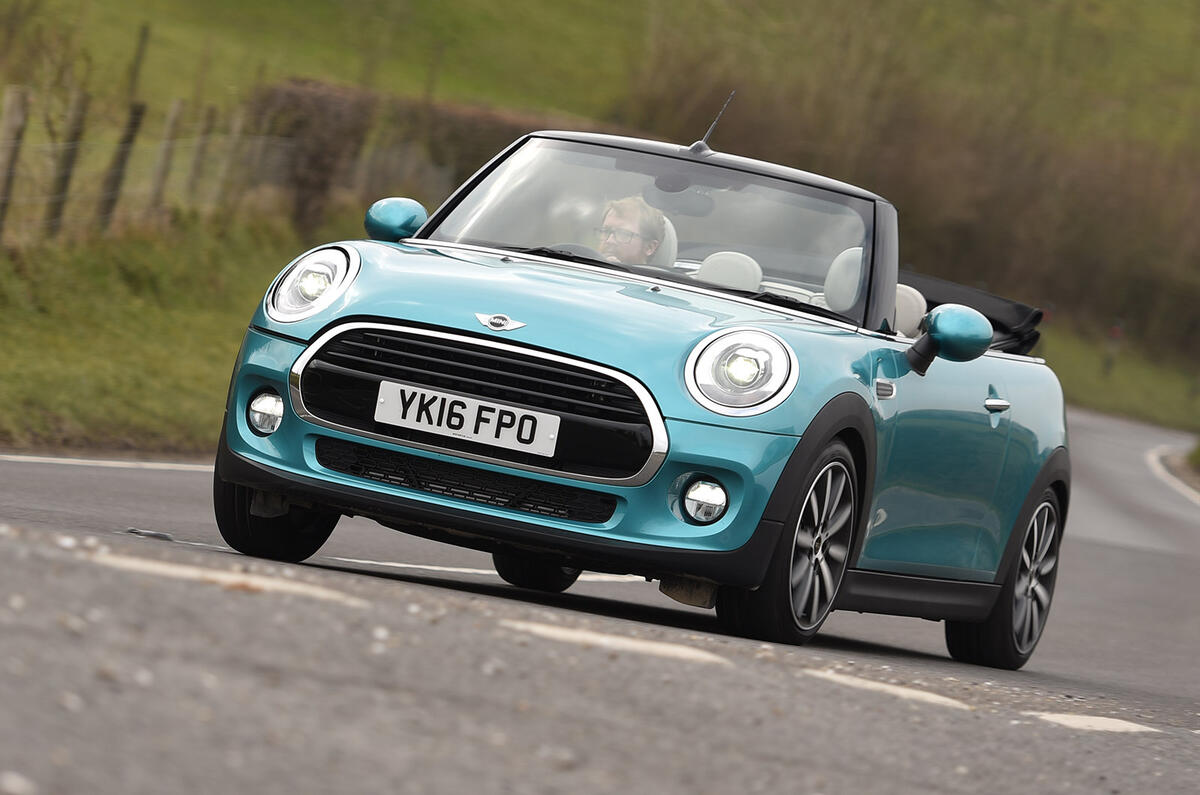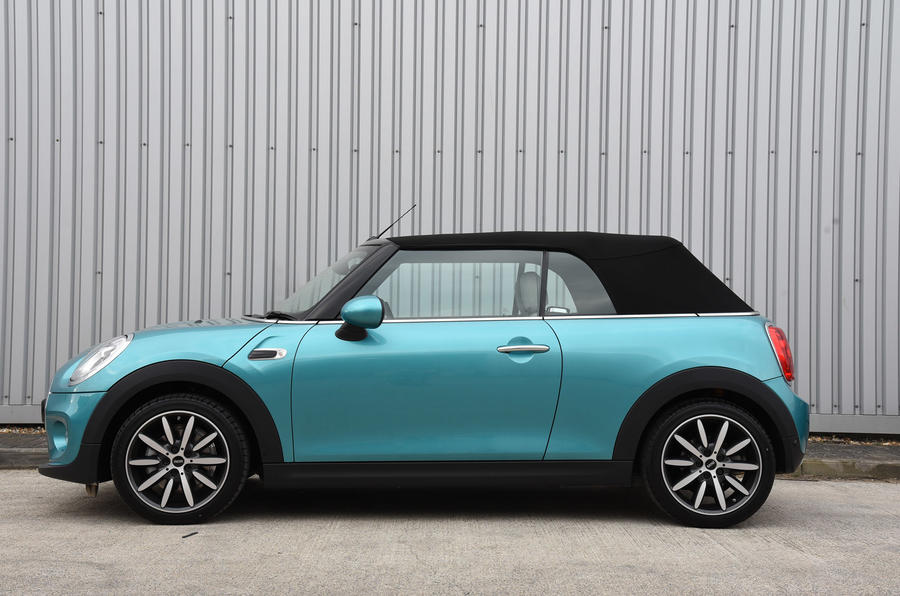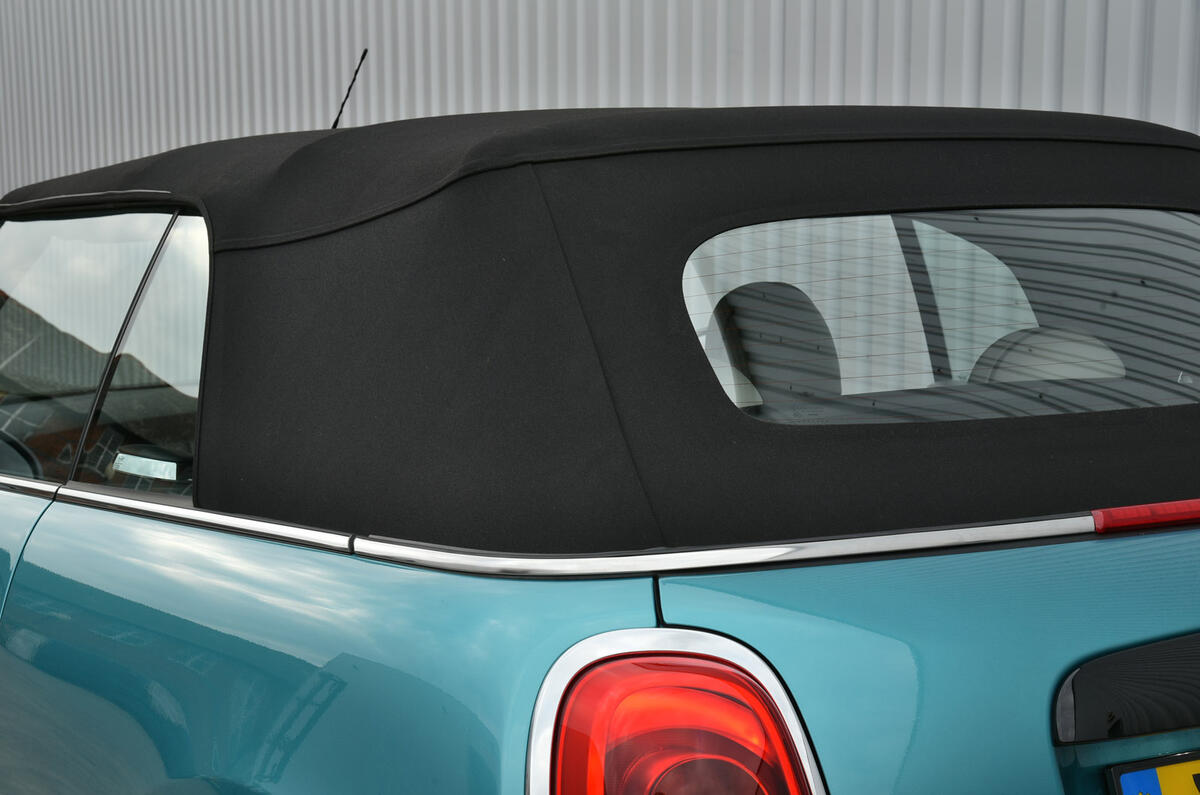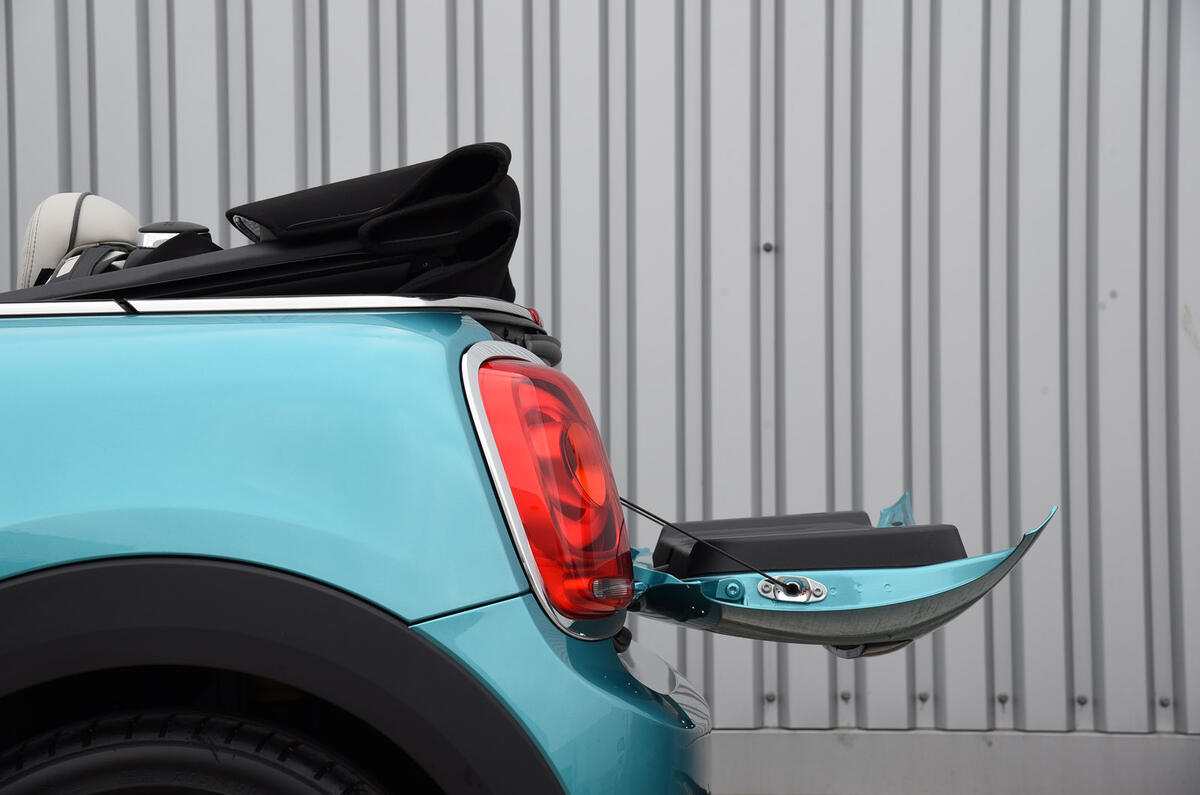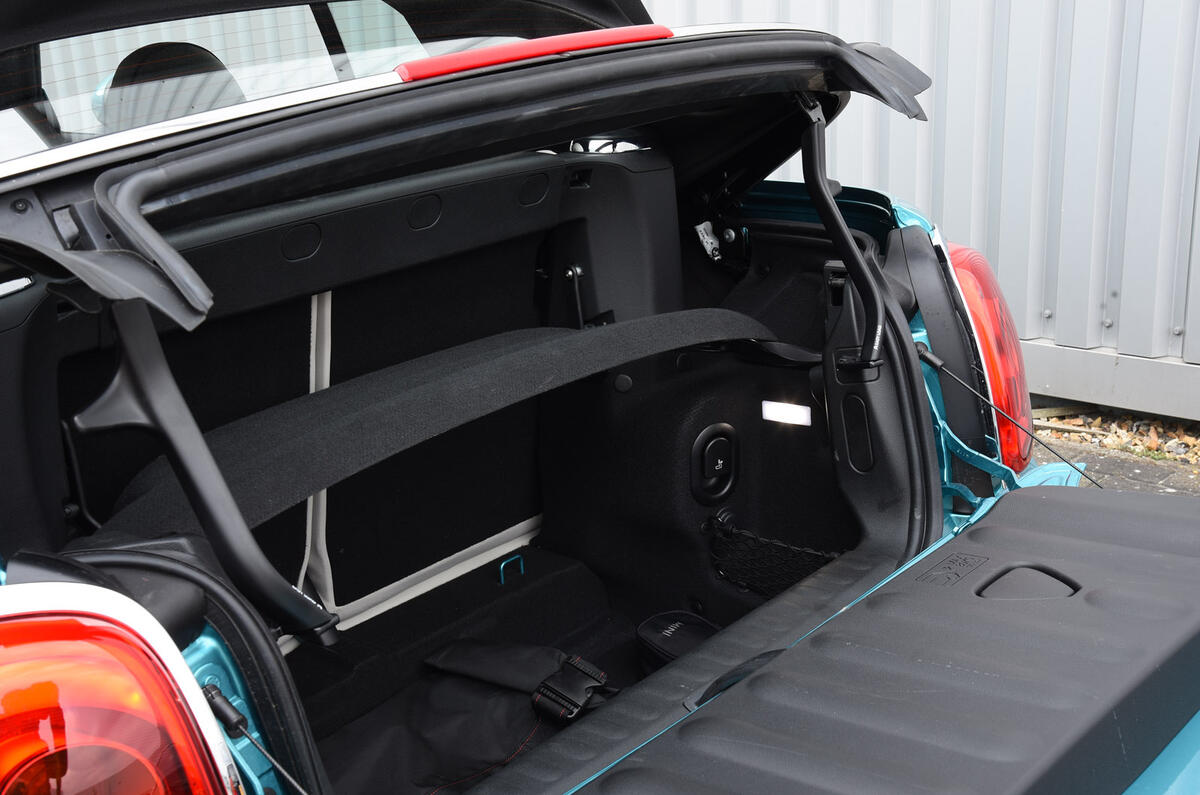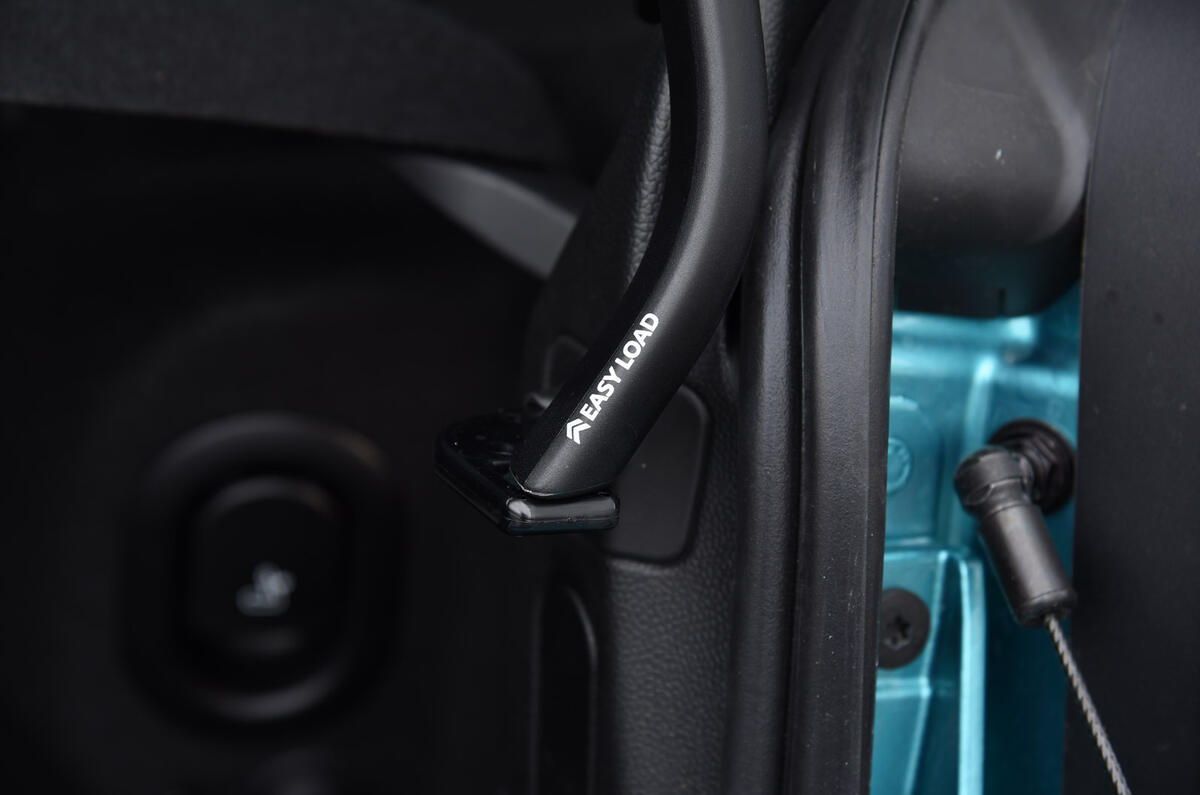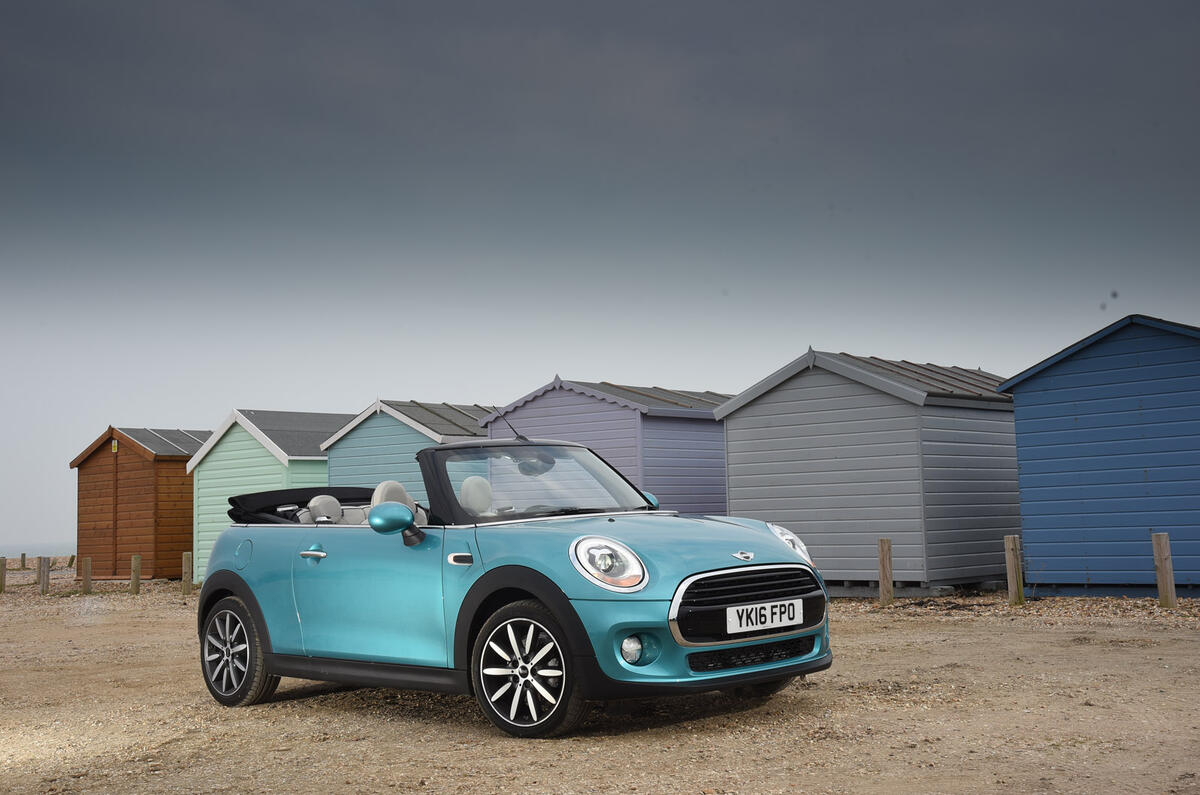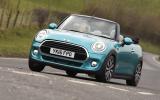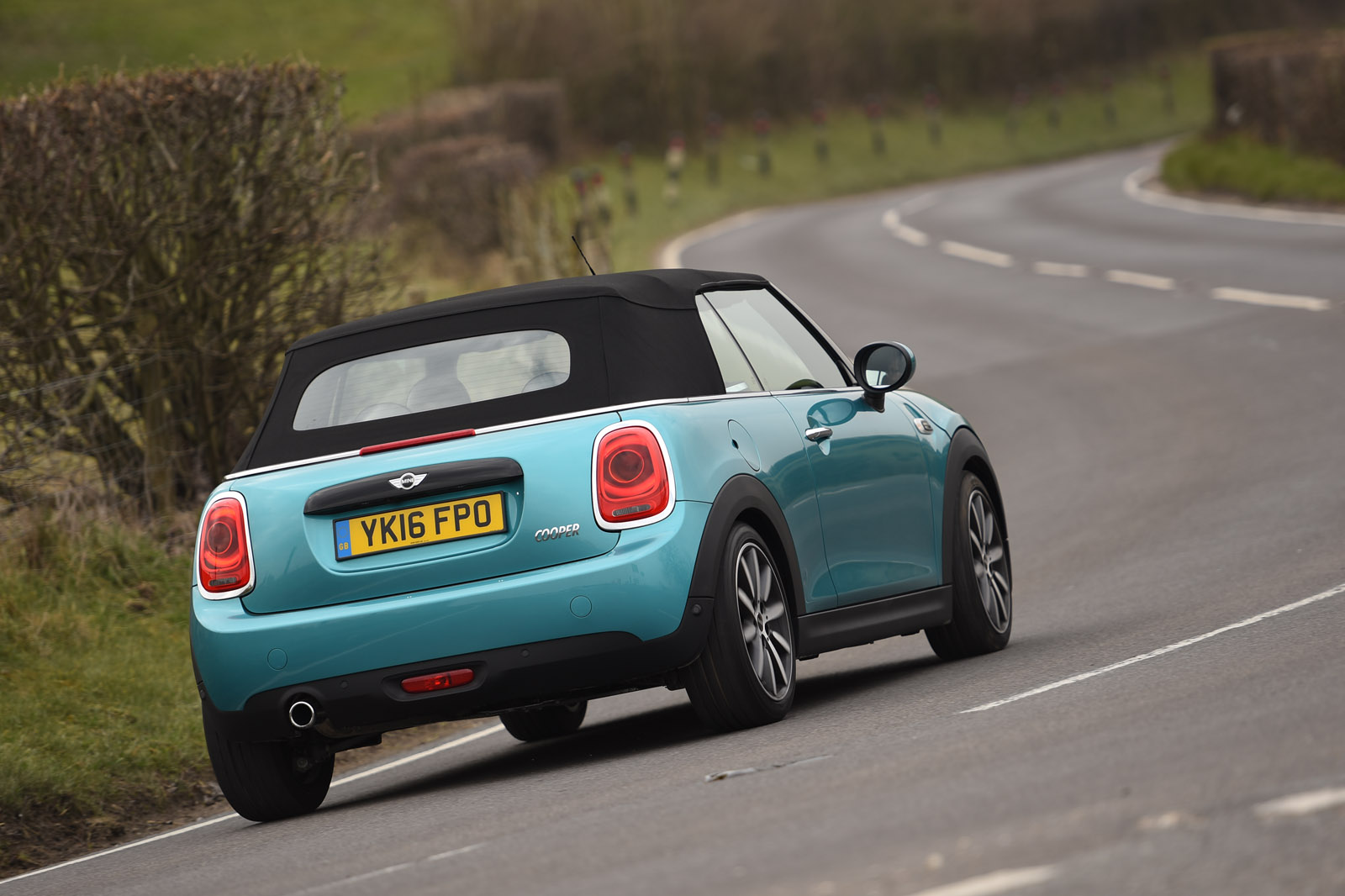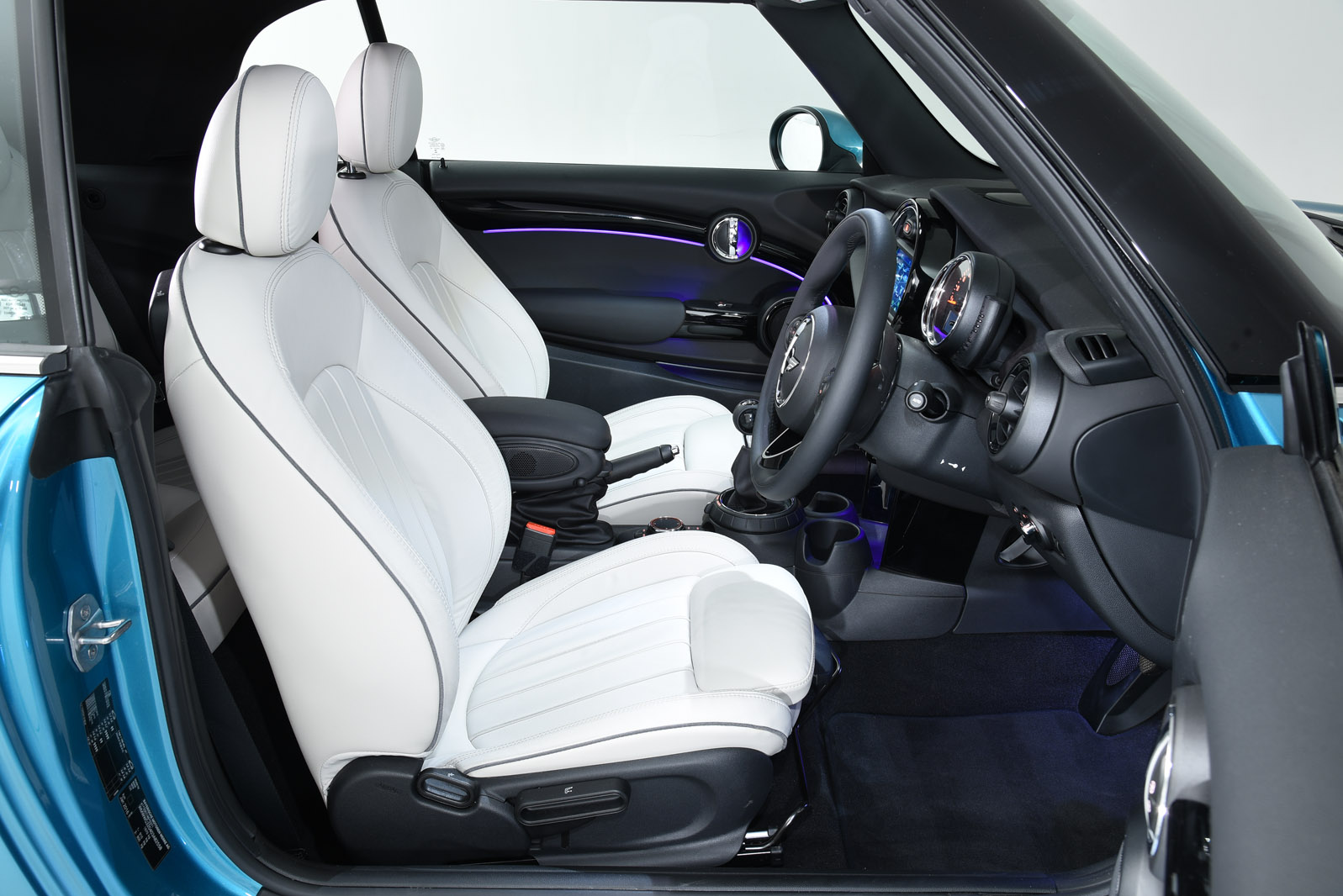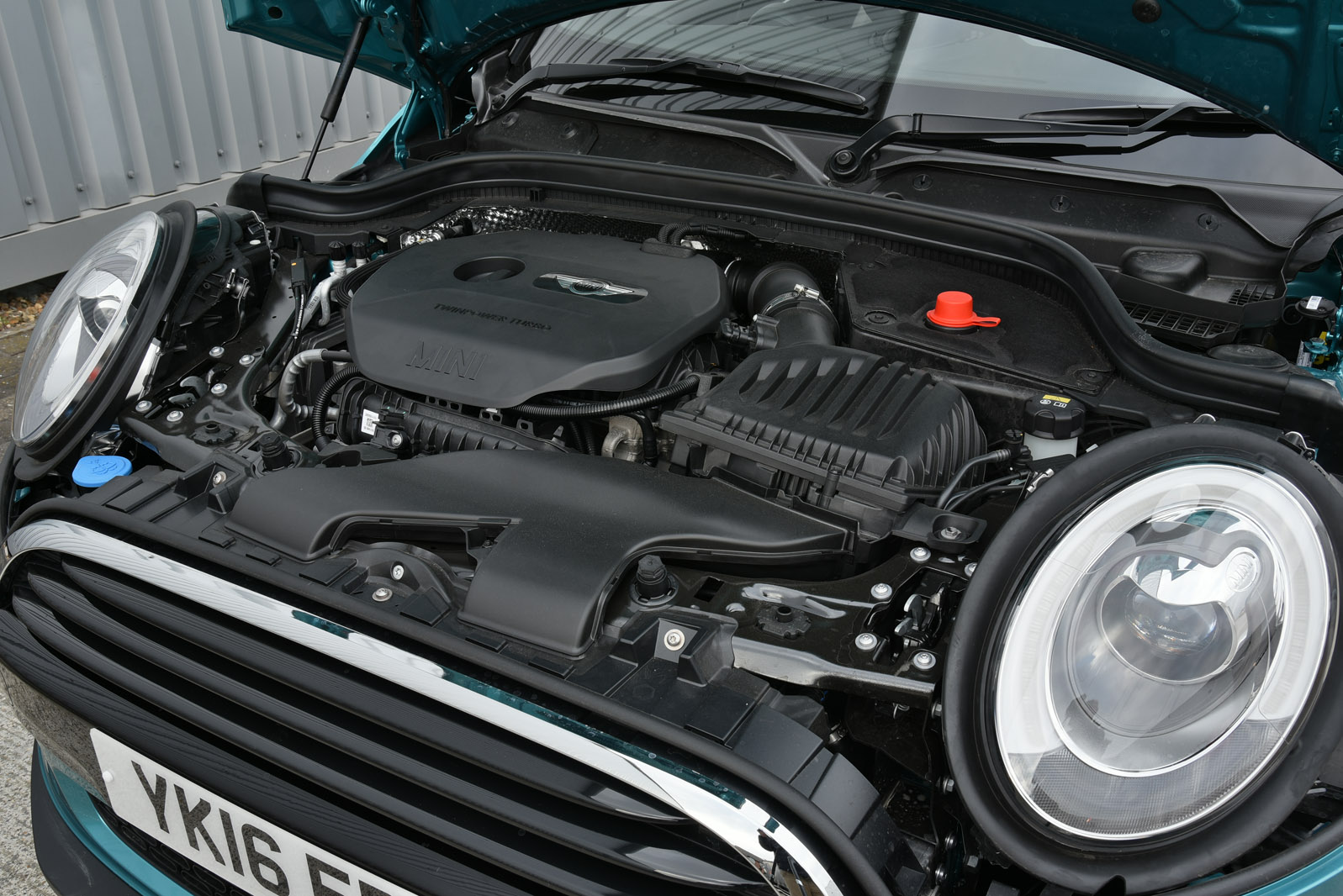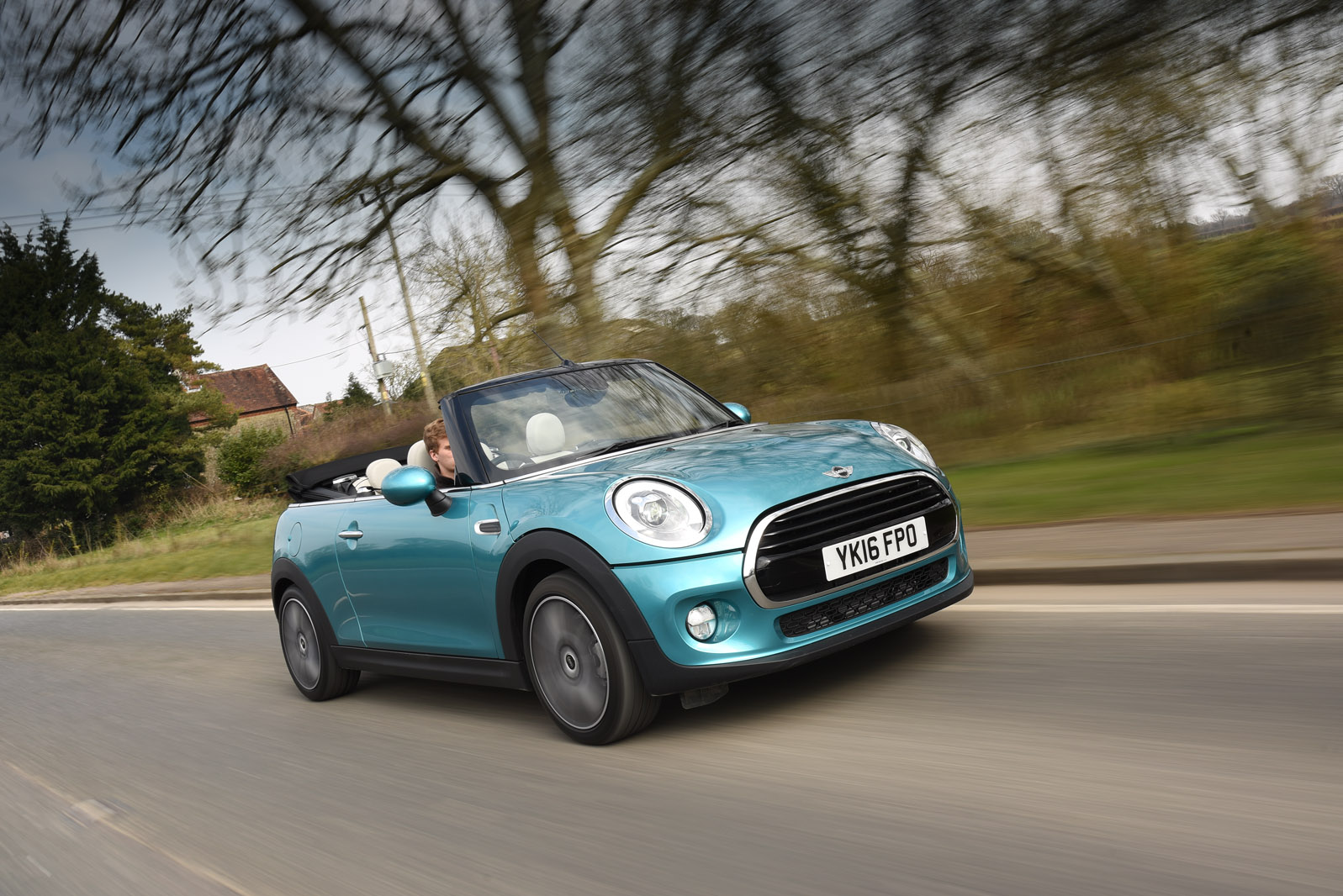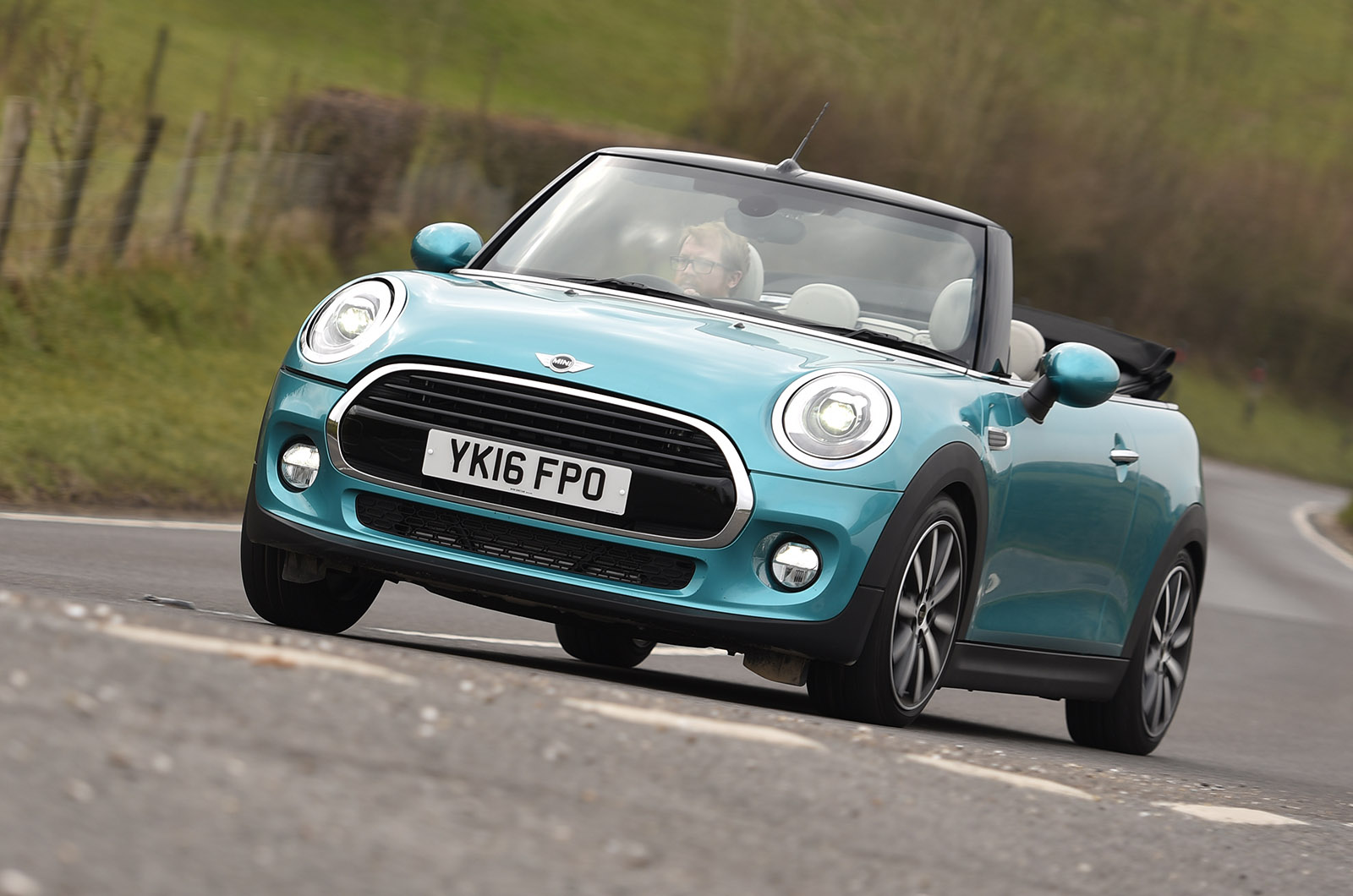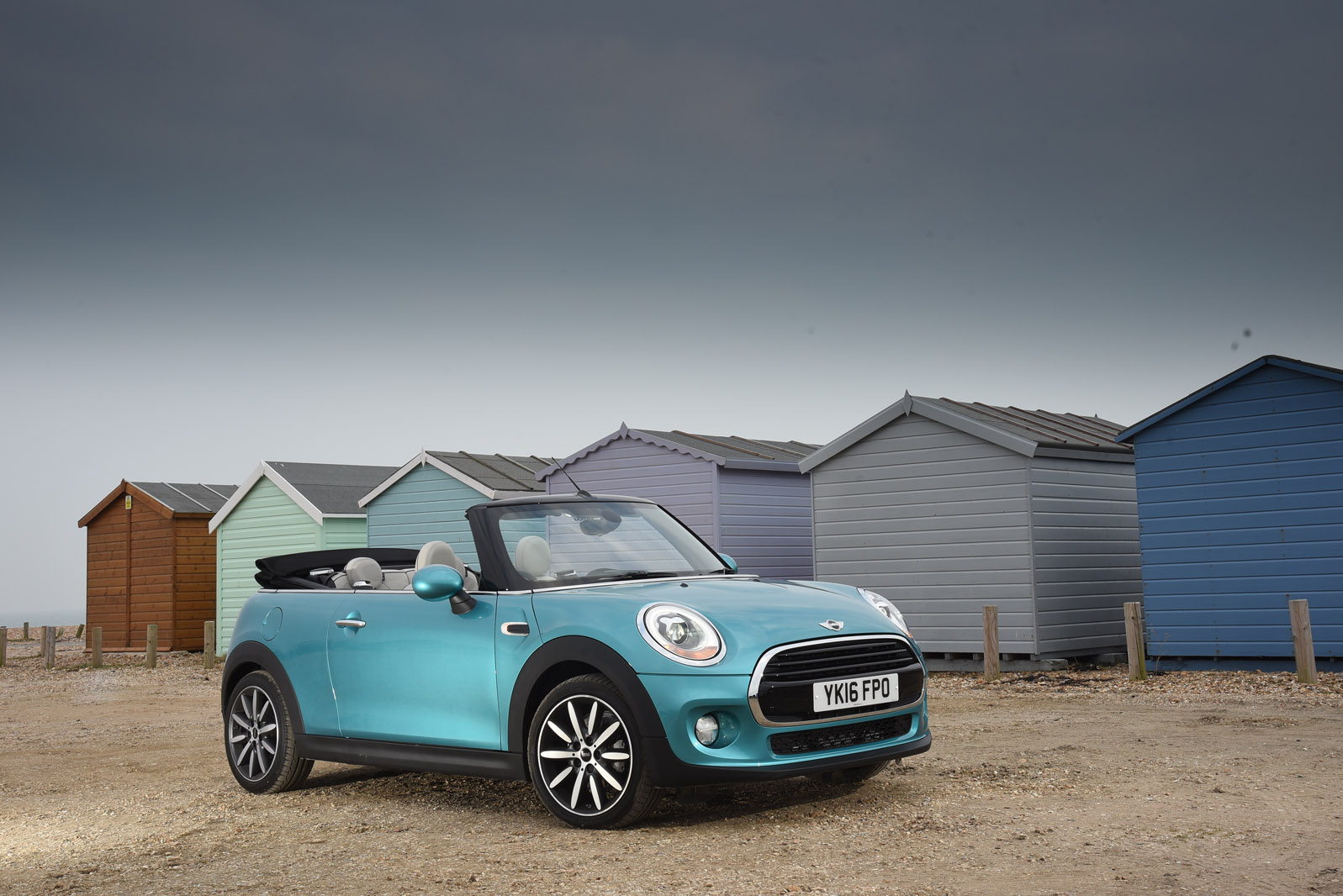The Convertible’s greeting is welcoming as you bend low into its driving seat and thunk the long door closed. A pillarless glasshouse makes the over-shoulder view good, and because BMW has worked at increasing the size of the glass rear window, you can now see almost as much out of the back with the hood up as you could out of a hatchback.
The driver’s seat is widely adjustable and supportive but quite unyielding, and you’re faced with a fascia that rises high and proud.
A large centre stack is crowned by an oversized LED light feature that encircles the infotainment display and replaces the old Mini’s central speedo. At our third encounter, it still seems like an unnecessary and distracting gimmick.
The entry-level Mini Cooper Convertible gets a 6.5in colour infotainment system with Mini’s ‘Visual Boost’ audio system, which consists of a DAB/FM tuner, six-speaker audio and Mini Connected USB interfacing to your smartphone. You don’t get satellite navigation or steering wheel controls for the audio system without paying for them.
The Media Pack — which our test car had — is likely to be a popular upgrade and brings with it enhanced Bluetooth connectivity, widescreen control display, navigation XL and Mini Connected XL (the latter funnelling weather reports and being quite neatly capable of providing an electronic warning of rain before it arrives).
In this specification, the audio system quality was good, the Bluetooth connection reliable and the navigation system up to parent firm BMW’s usual high standards of mapping detail and usability.
Mini’s Harman/Kardon hi-fi is a £590 upgrade that increases the car’s speaker count to 12 — and, pleasingly, you don’t have to have all the other expensive infotainment systems in order to get it.
Directly in front of you, mounted on the steering column, you’ll find the much smaller speedometer and half-size rev counter, both of which could be usefully enlarged and more readable.
Solid-feeling stalks sprout from either side of the wheel and, to the left, neat and expensive-feeling dials and buttons for the climate control and heated seats compete for your attention.
This is the more refined and higher-quality but still determinedly eccentric Mini cabin ambience we’ve become used to since 2014 – and it serves the Convertible as well as any other model sibling.
On the header rail you’ll find the switch for motoring the roof up and down. Now fully electric rather than part-hydraulic, the mechanism is much quieter and works quickly enough, but that 18mph operating limit can too often leave you praying for a bout of heavy urban traffic to complete a cycle if you risk one on the move.
But with the roof down, the Mini ushers the outside in as effectively as any cabriolet, which is more than can be said for most of its supermini-based rivals.
As for the promise of greater rear room and cargo space, both may be true – but you still won’t be inviting adult friends for a lift very often. The rear bench remains narrow and its seatbacks upright, and while there’s respectable head room, there’s only really sufficient leg room for kids under the age of 10. Still, it’s more than many of the car’s rivals grant.
The revisions to the boot access are more telling, opening up a smallish but usable space good for a modest weekly shop or a couple of soft bags.


